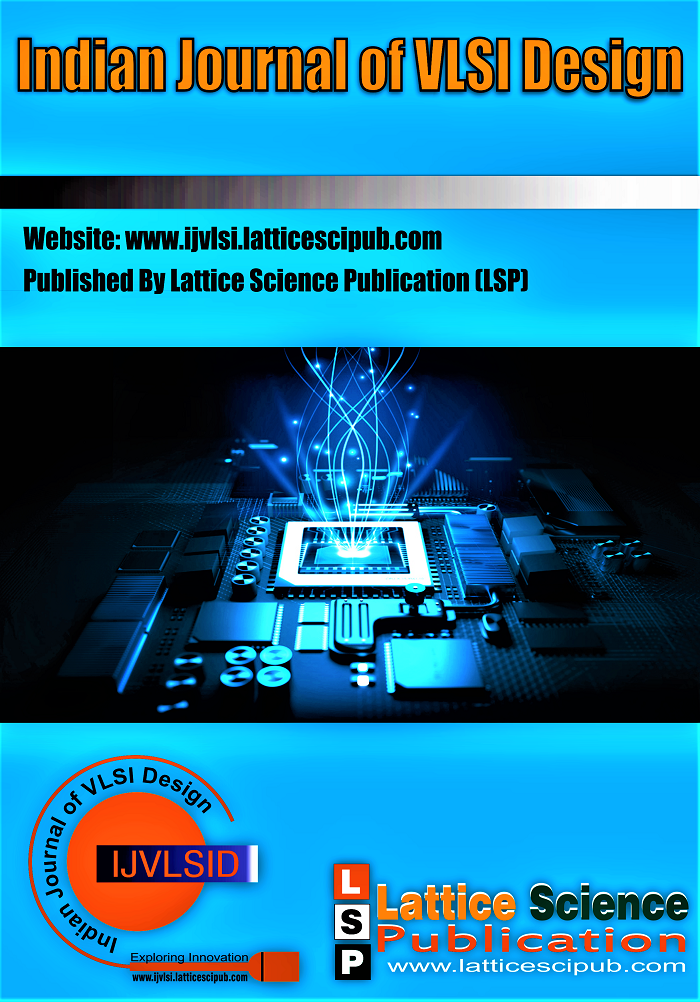Hybrid Renewable Energy Generation Through Incremental Conductance Mppt
Main Article Content
Abstract
The relevance of electricity generation from renewable energy sources is growing every day in the current global energy environment. The scarcity of fossil fuels and the environmental risks connected with traditional power producing methods are the main reasons behind this. The major sources of non-conventional energy are wind and solar which can be harnessed easily. A new system design for hybrid photovoltaic and wind-power generation is introduced within this study. A Modified M.P.P.T. has been proposed to strengthen productivity of this system. The proposed approach employs the Incremental Conductance (IC) MPPT technique. Under varied climatic conditions (Solar irradiance & Temperature), IC is utilized to determine the optimum voltage output of a photo voltaic generator (P.V.G.) within the photo voltaic system (P.V.) structure. The Incremental Conductance is utilized to manage the converter’s technology having boosting function. The P.M.S.G. is used to determine the maximum voltage output for varied wind flow rates in wind turbine system. Simulations are conducted in Matlab2019b to test efficacy of the proposed MPPT. The proposed scheme’s effectiveness can be supported with simulation results.
Downloads
Article Details

This work is licensed under a Creative Commons Attribution-NonCommercial-NoDerivatives 4.0 International License.
How to Cite
References
Pragya Nema, R.K. Nema, Saroj Rangnekar, “A current and future state of art development of hybrid energy system using wind and PV-solar”, Elsevier, Vol. 13, Issue 8, pp.2096-2103, 2009. [CrossRef]
Akanksha Sharma, H.P. Singh, S.K. Sinha, “Performance Enhancement of Integrated Solar-Wind Hybrid Energy System using MPPT”, IEEE Xplore , pp.107-110, 2018. [CrossRef]
Jinhane Karetite, Mohamed Cherkaoui, “Study of the different structures of hybrid systems in renewable energies”, Elsevier, Vol. 157, pp.323-330, 2019. [CrossRef]
Piyali Ganguly, Akhtar Kalam, Aladin Zayegh, “Solar–wind hybrid renewable energy system: current status of research on configurations, control, and sizing methodologies”, Elsevier, pp. 219-248, 2018. [CrossRef]
Hayat Elaissaoui, Mohammed Zerouali, Abdelghani El Ougli, Belkassem Tidhaf, “MPPT Algorithm Based on Fuzzy Logic and Artificial Neural Network (ANN) for a Hybrid Solar/Wind Power Generation System”, IEEE Xplore, 2020. [CrossRef]
Ashish S. Ingole, Prof. Bhushan S. Rakhonde, “Hybrid Power Generation System Using Wind Energy and Solar Energy”, International Journal of Scientific and Research Publications, ISSN 2250-3153, Vol. 5, Issue 3, March 2015.
Binayak Bhandari, Shiva Raj Poudel, Kyung-Tae Lee, and Sung-Hoon Ahn, “Mathematical Modeling of Hybrid Renewable Energy System: A Review on Small Hydro-Solar-Wind Power Generation”, International Journal of Precision Engineering and Manufacturing-Green Technology, Vol. 1, No. 2, pp. 157-173, April 2014. [CrossRef]
Swati Negi, Lini Mathew, “Hybrid Renewable Energy System: A Review”, International Journal of Electronic and Electrical Engineering, ISSN 0974-2174, Vol. 7, No. 5, 2014.
Ersan Kabalci, “Design and analysis of a hybrid renewable energy plant with solar and wind power”, Elsevier, Vol. 72, pp. 51-59, August 2013. [CrossRef]
M.K. Deshmukh, S.S. Deshmukh, “Modeling of hybrid renewable energy systems”, Elsevier, Vol. 12, pp. 235–249, 2008. [CrossRef]
S.Jain, and V. Agarwal, “An Integrated Hybrid Power Supply for Distributed Generation Applications Fed by Nonconventional Energy Sources,” IEEE Transactions on Energy Conversion, Vol. 23, Issue 2, pp. 622-631, June 2008. [CrossRef]
Valente, L. C. G. and de Almeida, S. C. A. B., “Economic Analysis of a Diesel/Photovoltaic Hybrid System for Decentralized Power Generation in Northern Brazil”, Elsevier, Vol. 23, Issue 4, pp. 317-323, April 1998. [CrossRef]
Marco Liserre, Remus Teodorescu, and FredeBlaabjerg, “Stability of Photovoltaic and Wind Turbine Grid-Connected Inverters for a Large Set of Grid Impedance Values”, IEEE Transactions on Power Electronics, Vol. 21, Issue 1, pp. 263-272, Jan. 2006. [CrossRef]
David Green, Eric Gill, and Weimin Huang, “An Inversion Method for Extraction of Wind Speed From High Frequency Ground-Wave Radar Oceanic Backscatter”, IEEE Transactions on Geoscience and Remote Sensing, Vol. 47, Issue 10, pp.3338-3346, Oct. 2009. [CrossRef]
Benelghali S, Benbouzid M.E.H and Charpentier J.F, “Comparison of PMSG and DFIG for Marine Current Turbine Applications”, International Conference on Electrical Machines - ICEM, Rome, 2010. [CrossRef]
Yuncong Jiang, Jaber A. Abu Qahouq, Mohamed Orabi, "AC PV solar system distributed architecture with maximum power point tracking", IEEE 34th International Telecommunications Energy Conference (INTELEC), pp.1-5, Sept. 30 2012-Oct. 4 2012.
Sandipan Patra, Ankur, Modem Narayana, Soumya R. Mohanty, Nand Kishor “Power Quality Improvement in Grid-connected Photovoltaic–Fuel Cell Based Hybrid System Using Robust Maximum Power Point Tracking Controller”, Electric Power Components and Systems , Taylor & Francis, Vol. 43, Issue 20, pp.2235–2250, 2015. [CrossRef]
Kamal Anoune, Mohsine Bouya, Mokhtar Ghazouani, Abdelali Astito, Abdellatif Ben Abdellah, “Hybrid Renewable Energy System to Maximize the Electrical Power Production”, International Renewable and Sustainable Energy Conference (IRSEC), pp. 533-539, 2016. [CrossRef]
Qilian Liang, Jiasong Mu, Min Jia, Wei Wang, Xuhong Feng, Baoju Zhang, “Communications, Signal Processing, and Systems”, International Conference on Communications, Signal Processing, and Systems, China, 2017.





